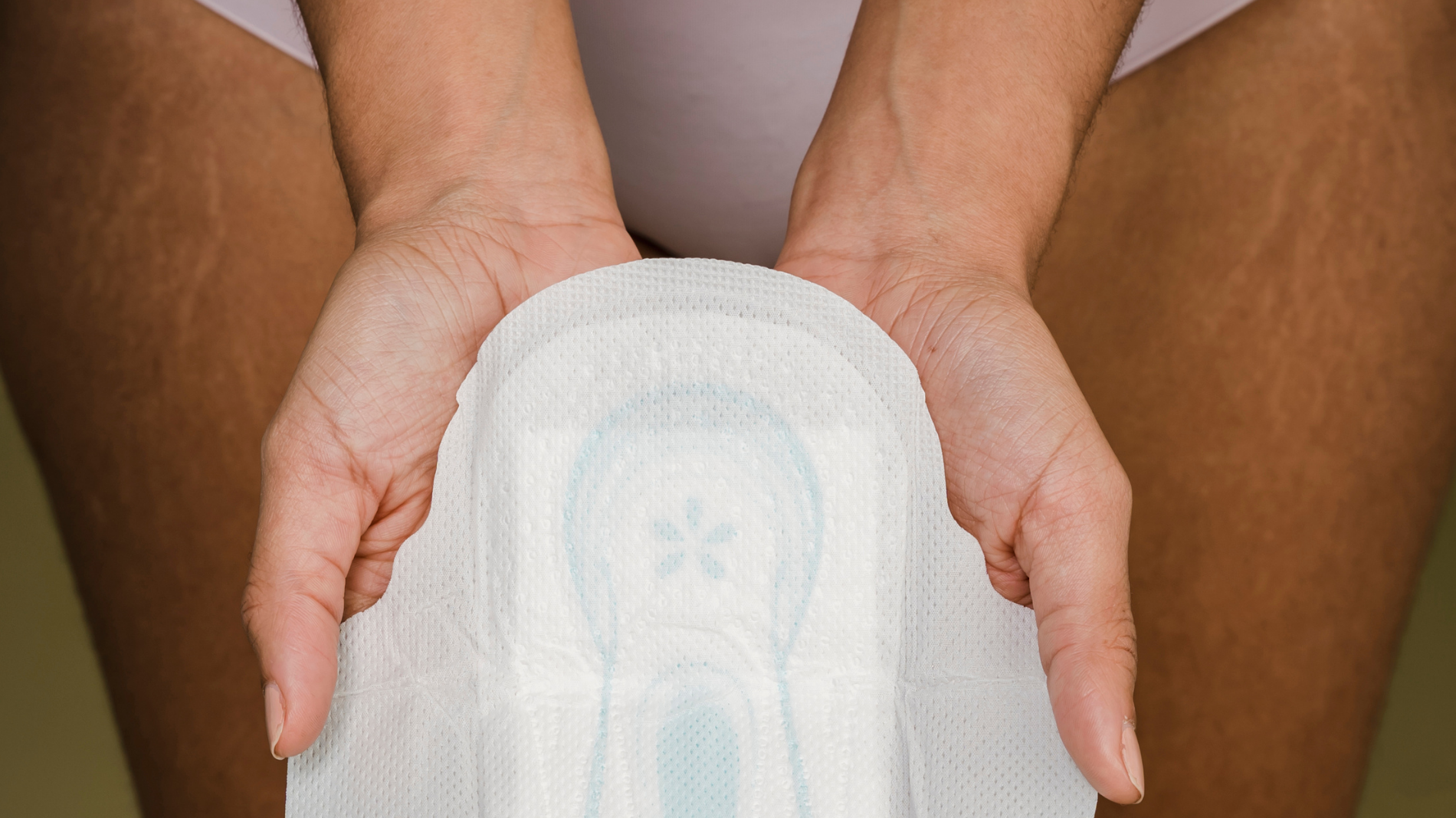We all know the importance of staying fresh and comfortable during that time of the month. But how often should you really be changing your period pad? Don't worry, we've got you covered with the ultimate guide to help you make the right decision.
When it comes to hygiene, there's no one-size-fits-all answer. Factors such as flow intensity, personal comfort, and the type of pad you're using can all influence how often you should change. In this blog, we'll break down the different types of products available and provide expert advice on how frequently you should swap them out.
Whether you prefer pads or tampons, reusable options, it's essential to find the right balance between protection, comfort and freshness. We'll delve into the science behind pads and explore tips to keep you feeling confident and comfortable throughout your entire menstrual cycle.
Say goodbye to uncertainties and hello to a worry-free period. Get ready to discover the answers to your burning questions about changing your sanitary towel. Let's dive in!
Importance of changing pads regularly
Maintaining proper hygiene during menstruation is crucial for your overall health and wellbeing. Changing your pad regularly is an essential part of this process. Leaving a used pad in place for too long can lead to a variety of issues, including increased risk of infection, skin irritation, and odour.
Leaving a pad in place for an extended period can allow bacteria to thrive, leading to the development of yeast infections or urinary tract infections (UTIs). These infections can cause discomfort, pain, and even more serious health complications if left untreated. Additionally, a used pad that remains in place for too long can become damp and uncomfortable, leading to skin irritation and rashes.
Another important reason to change your pad regularly is to maintain freshness and avoid unpleasant odours. As the pad absorbs your menstrual flow, it can start to emit odours that can be embarrassing and make you feel self-conscious. Changing the towel at the appropriate intervals can help you feel clean, confident, and comfortable throughout your menstrual cycle.
Factors to consider when deciding how often to change pads
When it comes to determining how often to change your pad, there are several factors to consider. The intensity of your menstrual flow, the type of pad you're using, and your personal comfort level all play a role in the recommended frequency.
The intensity of your menstrual flow can vary from person to person and even from cycle to cycle. Heavier flows may require more frequent changes to prevent leakage and maintain comfort, while lighter flows may allow for less frequent changes. It's important to pay attention to your body and adjust your changing routine accordingly.
The type of pad you're using can also impact how often you need to change it. Pads with a higher absorbency level may be able to be left in place for longer, while lighter or thinner pads may require more frequent changes. Tampons, on the other hand, need to be changed every 4-8 hours.
Your personal comfort level is another important factor to consider. If you feel that your pad is becoming uncomfortable or damp, it's a clear sign that it's time for a change. Listening to your body's cues and changing your towel when you feel the need can help you maintain a sense of freshness and confidence throughout your period.
Recommended frequency for changing pads
While there is no one-size-fits-all answer when it comes to the recommended frequency for changing pads, there are general guidelines that can help you determine the best approach for your needs.
For pads, it's generally recommended to change them every 4 to 8 hours, or whenever they feel full or uncomfortable. It's important to note that the frequency may need to be adjusted based on the intensity of your flow and the absorbency level of the pad you're using.
When it comes to tampons, the recommended frequency for changing is even more crucial. Tampons should be changed every 4 to 8 hours, or whenever they feel saturated. Leaving a tampon in place for too long can increase the risk of developing a serious condition called toxic shock syndrome (TSS), which can be life-threatening. It's essential to follow the instructions on the tampon packaging and never leave a tampon in overnight.
For those who use reusable menstrual cups, the recommended frequency for changing is typically every 4 to 8 hours, or whenever the cup or disc feels full. These reusable options can often be left in place for longer periods than disposable pads or tampons, but it's still important to empty and clean them regularly to maintain hygiene and prevent any potential health issues.
Signs that it's time to change your pad
Paying attention to your body's cues can help you determine when it's time to change your pad. There are several signs that indicate it's time for a change, and being aware of these can help you maintain optimal hygiene and comfort throughout your menstrual cycle.
One of the most obvious signs that it's time to change your pad is when it feels full or saturated. If you can feel the towel becoming heavy or bulky, or if you notice that it's starting to leak, it's a clear indication that it's time to swap it out for a fresh one.
Another sign to look out for is any discomfort or irritation. If you start to feel that the towel is causing chafing, itching, or a general sense of discomfort, it's time to change it. Leaving a used pad in place for too long can lead to skin irritation, rashes, and even the development of infections.
Tips for maintaining hygiene during menstruation
Maintaining proper hygiene during your menstrual cycle is essential for your overall health and wellbeing. By following a few simple tips, you can ensure that you stay clean, comfortable, and confident throughout your period.
One of the most important tips is to change your period care regularly, as we've discussed in the previous sections. Adhering to the recommended frequency for changing your pad can help prevent the development of infections, skin irritation, and unpleasant odors.
Another important tip is to practice good personal hygiene, such as washing your hands before and after changing your pad, and gently cleaning the genital area with mild soap and water. Avoid using harsh or scented products, as they can disrupt the natural pH balance and lead to irritation.
It's also important to wear clean, breathable underwear and clothing during your period. Avoid tight-fitting or synthetic fabrics, as they can trap moisture and create an environment that's conducive to bacterial growth. Opt for loose, cotton-based garments to keep you feeling fresh and comfortable.
Finally, be sure to dispose of used pads properly. Never flush them down the toilet, as this can clog the plumbing and cause environmental issues. Instead, wrap the pad and throw away or compost.
Different types of pads and their absorbency levels
When it comes to choosing the right pads, it's important to consider the different types available and their respective absorbency levels. This can help you make an informed decision and ensure that you have the right protection for your individual needs.
The most common types of sanitary towels are:
- Medium pads: These are the most basic and widely available sanitary towels. They offer a moderate level of absorbency and are suitable for light to medium flows.
- Heavy pads: These pads are designed to provide more absorbency for heavier flows. They are thicker and often have additional features, such as wings or extra absorption layers, to help prevent leakage.
- Panty liners: These thin, lightweight pads are designed for light spotting or discharge, and can be used as a supplement to regular pads or tampons.
When it comes to absorbency levels, pads are typically classified as light, regular, heavy, or super absorbent. The absorbency level you choose should be based on the intensity of your menstrual flow and your personal comfort preferences.
Common mistakes to avoid when using pads
While using pads may seem like a straightforward task, there are a few common mistakes that people often make, which can lead to discomfort, health issues, and even embarrassment. By being aware of these mistakes and taking steps to avoid them, you can ensure a more comfortable and hassle-free menstrual experience.
One of the most common mistakes is not changing the pads frequently enough. As we've discussed, leaving a used towel in place for too long can lead to various problems, such as infections, skin irritation, and odor. It's important to adhere to the recommended changing frequency to maintain proper hygiene.
Another mistake is using the wrong type or size of pads for your needs. If the pad is too small, it may not provide adequate coverage and protection, leading to leakage and discomfort. Conversely, if the towel is too large, it can feel bulky and uncomfortable, and may not fit properly.
Finally, some individuals may make the mistake of not practicing good personal hygiene during their menstrual cycle. Neglecting to wash the genital area or change underwear regularly can lead to the growth of bacteria and the development of infections. Maintaining proper hygiene is crucial for your overall health and well-being.
Alternative menstrual products to consider
While traditional pads are the most widely used menstrual products, there are several alternative options available that may be worth considering. These alternatives can offer a range of benefits, from increased comfort and sustainability to a more eco-friendly approach to menstrual management.
One popular alternative is the Mooncup, which is a reusable, silicone or rubber cup that is inserted into the vagina to collect menstrual flow. Menstrual cups can be left in place for up to 8 hours, and they are generally more comfortable and less bulky than traditional pads or tampons. They also have the added benefit of being more environmentally friendly, some people have used their Mooncups for over 20 years!
Finally, some individuals may choose to use reusable pants which are made from absorbent fabrics such as cotton or bamboo. These pants can be washed and reused, making them a more sustainable option.
So, changing your pads regularly is an essential part of maintaining proper hygiene during your menstrual cycle. By understanding the importance of this practice, the factors to consider when deciding how often to change, and the recommended frequency for different types of pads, you can ensure that you stay fresh, comfortable, and confident throughout your period.
Remember to pay attention to your body's cues, such as feeling full, uncomfortable, or noticing unpleasant odours, as these are all signs that it's time to change your pad. Additionally, maintain good personal hygiene by washing your hands, gently cleaning the genital area, and wearing clean, breathable underwear and clothing.
While traditional pads are the most common option, there are also alternative menstrual products, such as menstrual cups, and reusable pants, that you may want to consider. These alternatives can offer a range of benefits, from increased comfort and sustainability to a more eco-friendly approach to your period.
Ultimately, the key to maintaining optimal hygiene during your period is to find the right balance between protection, comfort and freshness. By following the tips and advice provided in this guide, you can take control of your menstrual cycle and feel confident and comfortable throughout the entire process.
Blog disclaimer
Our blog is intended to share information and ideas around periods, health, and sustainability. While we do our best to keep content accurate and up to date, things can change over time. The information here is not intended as medical advice — for any health-related concerns, please consult a qualified healthcare professional. For more information on our claims, please see our Claims Page, and for the most up-to-date product information, please visit our Product Pages.





